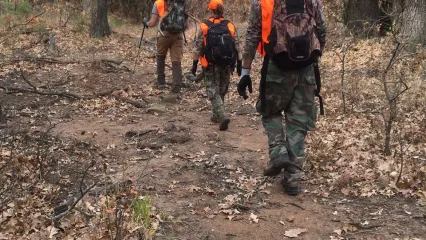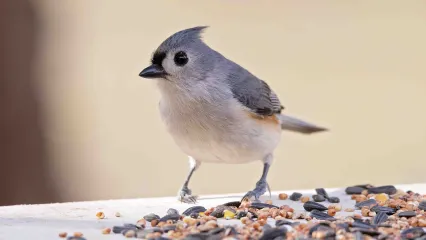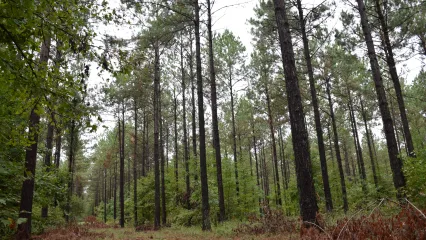Attention Non-Residents
The Oklahoma Wildlife Conservation Commission adopted new rules in 2025 that require non-residents accessing certain Oklahoma public hunting and fishing areas to check in and out of the area. By checking in and out of these areas, hunters, anglers, shooters, birdwatchers, hikers and any other users can help the Wildlife Department better understand how the area is being used. There is no additional cost associated with checking in or out of an area. There is no limit to the number of check ins for an individual in a year.

Contacts
Area Details
Fort Gibson WRP covers 3,500 acres in Wagoner and Cherokee Counties. Located north and east of Wagoner, Oklahoma. It is part of the Fort Gibson WMA, which also includes the Fort Gibson PHA.
Fort Gibson WMA is a mixture of upland and bottomland habitats. Upland areas consist of tall grass prairie mixed with farm fields and brushy thickets. Bottomland areas consist of Crosstimbers oak forest with cottonwood and sycamores in and around Fort Gibson lake.
North Portion – From Wagoner: 2 miles north on U.S. Hwy 69.
South Portion (WRP) – From Wagoner: 2 miles south on State Hwy 16, 1½ miles east on E0760 (Wagoner Jack Rd).
- Deer: White-tailed deer are present in fair numbers.
- Quail: Bobwhite are present in fair numbers.
- Rabbit: Cottontail are present in fair to good numbers.
- Furbearers: Coyote, bobcat and raccoon are present.
- Dove: The area has small grain agricultural fields that provide fair to good dove hunting.
- Squirrel: Fox squirrels are present in fair numbers.
- Waterfowl: There are usually good duck and goose hunting opportunities on and around Fort Gibson lake.
- Bald Eagle: Eagles winter on Fort Gibson lake.
Approximately 2,700 acres are planted to row crops, annually. Controlled burns are utilized to manage upland habitats. A 3,500 acre waterfowl refuge, in the Jackson Bay area, is managed for waterfowl with 9 wetland units and numerous fields planted to wheat, sunflower, milo and millet.
No camping is allowed on the area. However, numerous US Army Corps of Engineers campgrounds are available around the lake.
A rifle range can be found on the south side of Toppers road east of Wagoner. The range offers two shooting benches and a 100 yard range.
Fishing opportunities exist in numerous ponds on the area. Fort Gibson lake offers good fishing for white bass, catfish, crappie and black bass.
Unless otherwise provided, firearms are restricted to shotguns with pellets and rimfire only. All shotgun hunting is restricted to federally approved nontoxic shot.
Public access is prohibited from Oct. 15 – Jan. 31, unless otherwise provided.
Closed Seasons
Seasons w/ Special Restrictions
- Dove, Rail, Gallinule, Crow, Snipe, Duck, Merganser and Coot, Quail, Squirrel, Predator/Furbearer Calling
Closed Oct. 15 - Jan. 31.
No camping allowed.
GreenCountryOK
1-800-922-2118
Oklahoma Tourism and Recreation Department
Post Office Box 52002
Oklahoma City, OK 73152-2002
(800) 652-6552 or (405) 521-2409
www.travelok.com
Upper McClellan-Kerr Waterway Association
PO Box 2361
Muskogee, OK 74402
918-684-6363
1-888-687-6137
Muskogee Convention and Tourism
412 Boston, Muskogee OK 74402
918-684-6363
1-888-687-6137
www.visitmuskogee.com
Stilwell Area Chamber of Commerce
PO Box 845
Stilwell OK 74960
918-696-7845
Tulsa Convention and Visitors Bureau
Williams Center Tower II
Two West Second Street, Tulsa OK 74103
918-585-1201
1-800-558-3311
www.visittulsa.com
Tahlequah
918-456-3742
1-800-456-4860
Greater Tenkiller Area Association
PO Box Ten-K
Cookson OK 74427
918-457-4403
1-888-867-4403
www.laketenkiller.com
Apprentice Designation: A Learner's Permit for Hunting
Hunter education has greatly reduced hunting accidents, but if you can’t complete a course right away, the apprentice designation allows you to hunt under supervision. It works like a learner’s permit, giving you the chance to gain real experience safely until you finish hunter education.
Exploring the New Herron Family WMA
The new Herron Family WMA is more than 17,000 acres of hunting land, it is also adventure, access, conservation, and tradition. Thanks to a unique partnership, Oklahoma residents now have a new place to chase deer, call turkeys, hear quail, and pass on the outdoors to the next generation.


